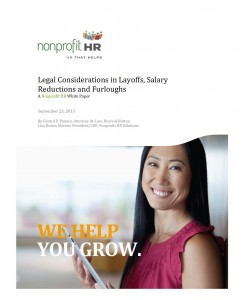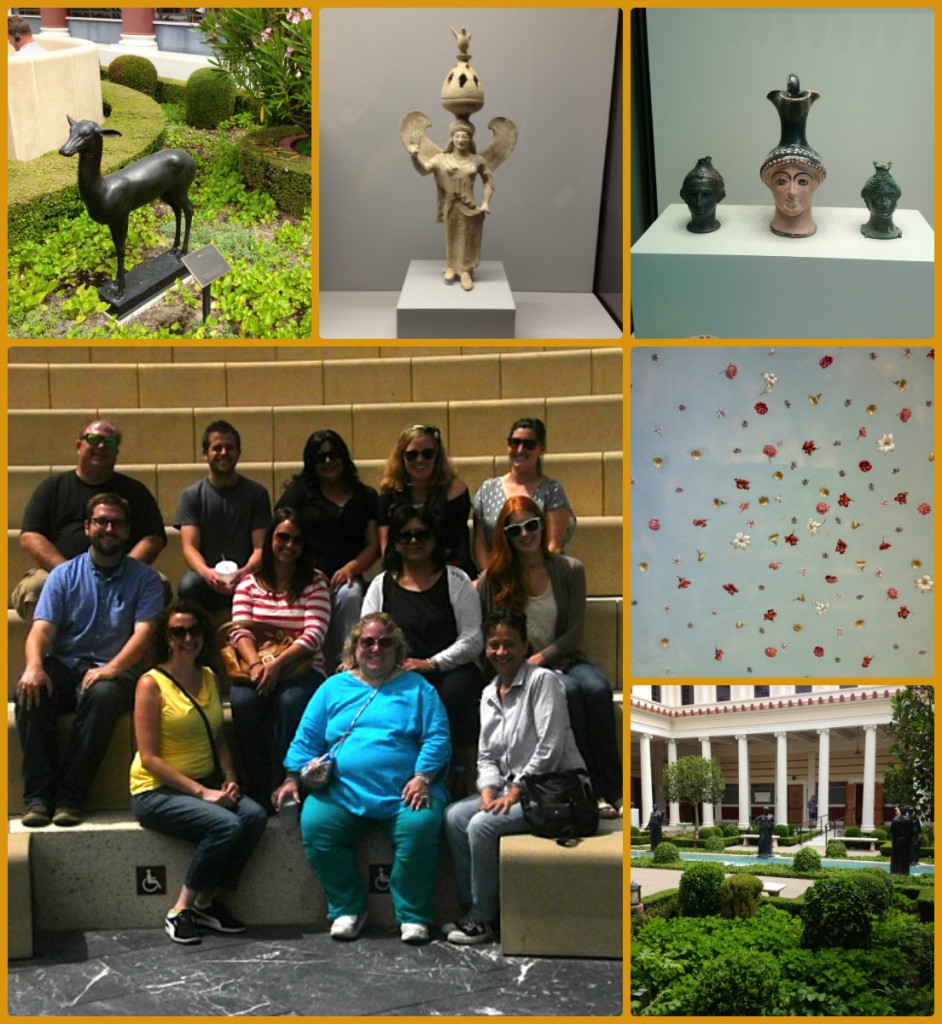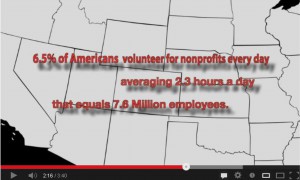Just two decades ago, jobs were for life – even if you hated yours. Offices were often dark and dingy, promotions were rare, there was no such thing as ergonomic desks and even smoking was allowed indoors. Today, not only are office spaces bright and more cheerful but many companies are now offering the option to telecommute. There are also more efficient systems in place, better laws protecting employees and far better benefits than ever before. And let’s not forget the in-house gyms, team building excursions, methodical review processes, and the boundless opportunities to grow. So what gives? Why are so many U.S. workers unhappy at work?
Job misery can have a devastating impact on individuals, and their employers. Nowadays, there are countless studies surrounding the decline in employee engagement – Gallup, Randstad and Mercer, the list goes on. Gallup has been measuring employee engagement in the United States since 2000 and finds that a whopping 77% of workers say they hate their jobs. Many report feeling no real connection to their work and state they are growing to resent their employers. Randstad has found that disengagement leads to some pretty bad habits – workers admitted that while on the job, they drank alcohol, took naps, checked or posted on social media, shopped online, played pranks on co-workers, and/or watched Netflix. The pressures modern day workers are clearly causing employees to feel burnout which is a natural reaction to stressful environments, or long workdays, but job dissatisfaction at this level usually occurs after long periods of unresolved issues.
One of the biggest problems seems to be having the wrong management in place. When the wrong person is hired or promoted to a management position, nothing fixes that bad decision. Not compensation, not benefits – nothing. When employees feel that their manager has little to no interest in them as human beings – their personal lives, their aspirations and their interests, especially at work – there is bound to be job misery. If you start typing “my boss is” into the Google search engine, you get options that include “crazy”, “lazy”, “bipolar”, “abusive” and “a tyrant”.
If you do the same Google search for “my job is”, it reveals a rather bleak outlook of life in the office by finishing your sentence with “killing me”, “stressing me out”, “ruining my mental health” or “draining my soul”. Those are some pretty strong comments and cause for concern. Most alarming of all – if you type “my job is stimulating”, Google assumes you have made a typo and suggest you must have meant “not stimulating”. Workers also feel they are expected to “do more with less” – blaming business owners who aren’t willing to expand their budgets to hire more people or provide better compensation to those already in place. Losing your best people because they’re stretched too thin can be costly so many employers are getting creative. Benefits can come in many different forms – ranging from flexible hours, stipends for commuting, increased vacation time or robust development programs.
It’s important for employers to be aware of these situations, evaluate if they’re a sign of a larger issue and identify what they can do to help. Workers crave development, advancement and purpose and when they don’t’ have it, they will move on.
On Monday, CNN Money published an in-depth review of government overpayments within the UI system and their findings. Although the findings do recognize the value of UI benefits to those receiving them properly, improper payments are simultaneously distressing for those who oversee limited budgets and work on shoestrings.
Digging through reports from the U.S. Department of Labor, the Campaign to Cut Waste, and individual state records, CNN found that an estimated $14 billion in benefits were paid out improperly during fiscal 2011. That’s more than 10 percent of all the jobless benefits paid out last year.
But some states did far worse than the national average. For instance, in Indiana, which has become known for bad spending habits, more UI payments made were made in error, or improperly, than were made correctly. Indiana actually made more improper payments than proper payments…to the tune of at least $1,743,109,894 over the last three years.
The blame doesn’t only fall on one or two states though. Unemployment Insurance has the second highest rate for improper payments of any federal program.
But, finally, something is being done. Sort of. A little bit.
The U.S. government and many states are trying to recoup their losses and avoid future overpayments.
CNN found that the majority of the UI benefits improperly collected go to check cashers who either aren’t actively searching for a job, were fired or quit voluntarily, and those who continue to file claims even after they’ve returned to work.
Although people do deliberately defraud the system and use fake documents or identities to collect benefits, the current focus is on establishing preventative methods to recover the money that has been lost.
The crackdown won’t help your nonprofit though.
Despite nearly half of all improper payments being deemed “recoverable,” the money will be returned to the federal government. There is no indication that the money will be returned to the employers who were overcharged, or that they’re tax rates will be positively affected by the discovery of errors.
Only a quarter of the estimated actual recoverable payments have been recovered so far. For the most part, when the government discovers someone was overpaid, it often issues a letter asking the claimant to return the extra funds. But the repayment can be waived in many states if the UI beneficiary can show that they’re in financial distress and didn’t actively intend for the error to occur.

Stellar recruiting and retention strategies are key to a nonprofit’s growth, but sometimes those solutions do not align with budgets. With the increasing rate at which talent moves through the nonprofit sector, it’s more important now than ever to reinvent the wheel when it comes to investing in employees.
There are more and more people seeking to serve a higher purpose and one of the ways they see to accomplish that is to grab an opportunity to craft a mission-driven career. If the nonprofit sector can’t demonstrate that they offer viable career opportunities within a strong organizational culture, they will miss the chance to cultivate future talent. The biggest talent acquisition challenge nonprofits face is limited budgeting but it’s important to remember that at the end of the day it’s the people that fuel the nonprofit sector – not just the donors and the volunteers but most importantly, the people who work for you.
Gaining a better understanding of how the leaders in your organization think about the development of talent, will allow you to start aligning those ideas with the overall goals of the business. Focus on your assets and what opportunities as a whole your organization has in its sights and commit to those aspirations by investing in the people. Creating an effective workplace isn’t just about compensation. Employees consistently rank company culture, leadership, career growth and work-life balance right up there with pay. The act of investing in talent sends a clear message that the company values its people by increasing morale, performance and retention.
You can make gradual improvements and see major results. Here are some things to consider:
It doesn’t hurt to also consider how much philanthropic capital is routed to talent efforts? Review where your donors dollars are going and make a case to shift some of those funds if there is currently no talent investment already set up. Grantmaking needs to intentionally invest in talent to keep top talent engaged and start Initiating conversations regarding the value of employee retention.
People are the most important asset—driving impact, performance and sustainability in the sector. No matter your nonprofit’s budget, you can have a strong organizational culture even in this time of uncertainty and budgetary struggle. And in fact, if you hope to advance your mission, you must make these types of changes. Take the time to invest in your teams and systems to stay ahead of the talent curve.
Transportation benefits can be a great employer-incentive to offer employees. Whether it be for public transit or public parking—these benefits can be paid to a 3rd party transit or parking company or directly to employees. However, due to the latest federal legislation known as the Tax Cuts and Jobs Act, employers may no longer deduct transportation fringe benefits as their own deductible business expenses. When it comes to nonprofit employers that provide this benefit, they are required to report and pay the tax on the value provided as taxable “unrelated business income.”
So what specific impact does this act have on nonprofit employers? This Act requires an unrelated business income tax “UBIT” on nonprofit organizations for providing transportation fringe benefits. If a nonprofit employer uses some of its revenues to pay for employees’ transportation benefits, then such revenues will be taxed to the employer. In addition, these nonprofit revenues would not otherwise be taxable, given the nonprofit’s tax-exempt status. This change is meant to level out the employer tax—providing more of a unity between taxable and non-taxable employers in terms of taxable income to the employer.
A UBIT is the income a 501(c)(3) nonprofit organization can generate from a trade or business that is commonly carried on by the organization and is not related to the organization’s exempt purposes. Prior to the Act, a 501(c)(3) nonprofit organization’s unrelated business income was subject to a tax rate determined under a marginal rate structure in which the lowest tax rate was 15% and the highest tax rate was 35%. This Act removes this marginal rate structure and offers a flat rate of 21% on unrelated business income. With that being said, a 501(c)(3) nonprofit organization’s expenses related to the provision of qualified transportation benefits will now be subject to the flat UBIT rate of 21%.
For the nonprofit sector, treating transportation fringe benefits as unrelated business income will likely result in new reporting and potential tax liability implications. Also, the IRS has not provided any specific instructions on the estimated payment requirements for taxes associated with transportation fringes. Until additional information is given, it would be in the organizations best interest to follow current standard procedures for tax payments that are associated with Form 990-T.

According to global research about hiring trends published by Development Dimensions International (DDI), half of new employees report that they are experiencing buyer’s remorse after accepting a recent job offer.* But new employees aren’t the only ones rethinking their employment.
Many employers surveyed also reported that they are questioning whether they have made wise hiring decisions, with 1-in-8 new workers employed during a 12-month period having proved to be a “bad hire.”
When staffing directors were asked what the top reasons for hiring mistakes were, nearly one-third of respondents blamed an over-reliance on hiring manager evaluations, while only 21 percent pointed to candidates that had oversold their skills.
And because interviews are one of the best ways to determine how a potential candidate will perform in the role, bad interviews can be poisonous. But only 1-in-3 staffing directors feel that their hiring managers are skilled at conducting high-quality interviews, or are satisfied with their company’s training program for interviewers.
In better news, further research revealed that just over half of all new hires would rate themselves as confident in their decision. Delving deeper, many of those who reported a lack of confidence found that the hiring process had failed to paint a realistic picture of the job, department and company they are now employed by.
On the other hand, in companies where the hiring process yielded an accurate portrayal of the job, company, and department, new hires were far more confident in their decisions, less likely to immediately begin scanning job boards, and highly engaged with the job and their workplace.
So what’s the best way for a nonprofit to address these concerns?
Well-trained hiring managers, realistic portrayals of what the position is really like, and good interviews!
Read more about the research by DDI International at SHRM. And come back tomorrow for Part 2: Hiring Tips for Managers and Making Your Interviews Work.

If your organization is considering having an audit for the first time or changing auditors, it is wise to exercise due diligence when obtaining bids for services. With the continued focus on transparency and accountability by government agencies, donors, parent organizations and the general public, the selection of a qualified certified public accountant (CPA) has become increasingly important.
Quality audit and accounting services help nonprofit organizations safeguard their assets; improve internal controls and efficiency; complete timely and accurate returns to comply with federal and state regulatory filing requirements; and stay on top of regulatory requirements, accounting standards and industry best practices.
Before you request bids, your organization needs to answer a few key questions:
Gone are the days of calling a couple of CPAs to say, “Give me a bid,” and reaching an agreement with a handshake. Today’s organizations need to be conscientious about their selection of a CPA. Conducting a diligent and thorough selection process not only satisfies key stakeholders, but ultimately helps protect the organization.
Barry Omahen, CPA, is the Managing Partner of Lindquist LLP, a certified public accounting firm specializing in audits of not-for-profit organizations and their related employee benefit plans. Barry’s chief responsibilities include supervising Lindquist LLP’s day-to-day operations and the firm’s quality control review process. Email Barry at bomahen@lindquistcpa.com.
Stephanie Kretschmer, Marketing Manager, helps the professionals in Lindquist LLP’s four West Coast offices attract and retain clients. She oversees firm communications and has responded to hundreds of requests for proposal in her career. Email Stephanie at skretschmer@lindquistcpa.com.
To learn more from Lindquist’s nonprofit-focused CPAs, watch the recorded webinar: “Beyond the Numbers- How to Review your Organization’s Form 990.”

Have you ever considered different ways to engage your employees at your nonprofit? High performing companies like Google, Zappos, LinkedIn and other organizations have found a way to have both high productivity among their employees along with profitability and it’s all due to creating a fun work environment. When looking at these highly successful companies, they have been able to incorporate fun into the foundation of their culture. While having fun at work may not produce results on its own, it will make your nonprofit organization stand out among your competitors and spark the interest of future employees who are looking for new employment.
Prioritizing fun in the workplace can have a direct impact throughout your organization in ways that you may not expect – such as organizational health. Fun at work can be used to encourage participation amongst employees, making them want to engage in wellness programs. Productivity; fun can offer your employees a break or distraction from everyday tasks, creating valuable break time. Engagement; when employees are engaged they tend to be more enthusiastic about their work.
Many workers have a tendency to imagine the ideal work environment and can’t seem to shake the idea that there’s always something out there that is a better fit for them. This can make employees only look at the flaws of their current work environment rather than seeing its potential. Discussing such concerns with your manager and/or leadership will help them better understand the issue at hand and work together to create a fun workplace.
While fun at work can build solidarity, connections and an outlet for workplace stress, the BIG question is… how do you get started? Since this is a cultural change, no one single event or two can single handed lee change a work environment. You can begin by assessing your culture. Ask yourself if you see how the value of fun can fit and then explore how the fun can become a part of your operations. The next big revolution in the working world is focusing in on culture.

Sedia ruled the law incorrectly forces unions to represent workers who don’t pay union dues.
Read more about the fight, and what experts from all sides of the fight predict will happen, here.

While it is true that American organizations are one of the top most productive business sectors in the world, lack of vacation will inevitably lead to poor physical and mental health, as well as increased turnover rates. Vacations are imperative to maintaining vitality and work ethic throughout the office—increasing both productivity and happiness with one’s job and others.
With 61% of employed Americans expecting to work during their summer vacation, it’s no wonder many employees lack enthusiasm when planning their vacation time. Here are some prevalent work-related activities vacationing workers often find inevitable:
Developing stress prior to, during, and after vacation, due to interrupted work flow and lack of routine, many workers fail to recognize the positive effects vacation has on one’s work.
Use these methods to make vacations relaxing and work-free:
Vacations are crucial to a worker’s sanity and general attitude towards the workplace. Though it’s tough to step away from the computer and turn off the smartphone, time away from the office will provide you much needed rest, and the break you deserve. Vacations are what help employees remain satisfied with their jobs, in turn keeping organizations competitive and successful.
Learn more about vacation and work time here.

For nonprofits, employees’ collaborative efforts are often the key element to mission advancement But clashing personalities working toward the same goal can lead to resentment and impatience in the work place.
Learning to recognize and understand others’ personality strengths and weaknesses can help you appreciate the diverse environment you work in Specifically, nonprofits can take advantage of their diversity when it comes to improving their employment procedures and ensuring ongoing structural soundness.
Basic working styles can often be separated into 4 broad categories:
Whichever working style team members possess doesn’t really matter by itself What most affects a nonprofit’s success is the compilation of strengths your team brings to the table and your team’s ability to successfully work together as a cohesive unit. As long as you understand and utilize everyone’s unique abilities, pertinent to your team’s progress, your nonprofit will continue to flourish.
Discover which working style you have here.

Though prioritizing leadership development is a step in the right direction, nonprofits must simultaneously analyze and define both strategy and leadership development procedures in order to transform goals into achieved reality.
Nonprofits often lose momentum and general direction after failing to go over the specifics. More often than not, leadership development procedures fall into generalized categories. Because no one strategy or goal is alike, it’s important to identify the specific skills required for every set objective.
When looking at future development plans, your organization must develop a consensus around what skills your employees, leaders, and future leaders currently possess, and what behaviors will be required for future endeavors. Identifying the gap between present and future skill sets will better allow you to create a plan of action to achieve such skills.
Bridgespan created a process to help organizations both analyze potential changes in business strategy, and create a leadership development plan to address these organizational shifts.
When looking to the future, ask yourself these questions:
Overall, you must think of strategy and leadership development as a package deal. Greatly affecting one another, strategy and leadership development must consistently be analyzed side by side.
By closely monitoring your organization and its future leadership training process, you can decide what’s effective and what still requires improvement. Attention to detail is the key ingredient to identifying potential weaknesses, harnessing current strengths, and bridging the organizational gaps.
Learn more about linking leadership development and strategy here.

Truth be told, the process of hiring from within an organization is fairly common. Having built up trust and demonstrated more competence than the average worker bee, many workers within your organization may appear more than ready for a higher authority position.
But just because your buzziest employees are great at what they do now, it does not mean that they possess the skills and desire to move up within your agency.
While an individual may excel at his or her current tasks, the leap from associate to manager, for example, can damage one’s professional career. For instance, if a promoting manager fails to analyze the key differences in position responsibilities, the promoted worker may be unprepared or unwilling to perform the newly assigned tasks.
Such confusion (and irritability, or push back in some cases) will cause a domino effect within your organization. If other employees either don’t respect their newly appointed superior, or don’t feel that their new superior is prepared for the increase in responsibility, they may develop lazy work habits and become resentful. And when work production decreases, relationships with outside sources—whether with donors or community liaisons—will inevitably suffer.
And without growing external support, your company’s mission will become much harder to advance.
Avoid promotion regrets. Take the time to properly and effectively assess your potential candidates.
Here are some guidelines to follow when considering promoting within:
Hiring within is an extensive process, but produces worthwhile results when proper precautions are taken. Be responsible and prepare. Set the example. So your company’s future leaders can one day do the same.
Learn more ways you can turn a good worker into a strong leader here.

Effective communication in the workplace is an integral element to business success. It isn’t just about managing conflict, although an important benefit, good communication creates an environment that allows employees to be productive and highly effective.
The desire for human connections at work isn’t a new concept and long gone are the days when employees came into work and sat in front of a computer for an eight-hour stretch with little to no communication at all. Nowadays, more than ever, we get so caught up in the hustle and bustle of the day-to-day business that we forget to make time to connect with those around us. When employees come together for the pure enjoyment of one another’s company, they experience an increase in morale and commitment to each other as well as the company itself – keeping them engaged and positive.
Many of the conversations we have at work are naturally focused on the business – impending projects, upcoming events or deadlines and of course, those funding concerns as opposed to interpersonal conversations. However, if you want engaged employees who are committed to your nonprofits mission, we must pick our heads up out of our own busyness and acknowledge those around us. The desire to want to be noticed, valued and appreciated are all fundamental human needs, so just by facilitating more and better conversations through simple human interactions such as talking more, asking more and even thanking more, can help to strengthen your teams morale and loyalty.
Employees look forward to coming to work when they feel like they have something in common with their fellow co-workers or even better – have a valued friend at work. And while there are typically five generations in the workplace today – cross-generational connections can sometimes take time and effort. Ensuring there is time for relationship bonding through open communication can help your organization in unexpected ways. It also doesn’t hurt when they know they can talk to their boss about problems and feel heard.
Communication is about more than just talking, it’s about connecting with people -one of the most powerful benefits in the workplace. Effective workplace communication helps employees form highly efficient teams so start building strong relationships by reaching out and taking the time to connect in meaningful ways.

How has your organization adapted to better accommodate hiring workers with disabilities?
The Association aims to create a plan that provides workers with disabilities a paycheck while strengthening the deeper sense of purpose and belonging many people find in their jobs.
Nationally more than 30 percent of the adult population receiving income-based government assistance has a disability. But, only 1 in 3 adults with disabilities, ages 18 to 64, were employed in 2011—the most recent year statistics are available for—compared with 3 out of 4 adults without a disability.
However, according to the NGA, the U.S. spends about $300 billion annually to support unemployed workers with disabilities, while 67 percent of working-age people with disabilities would rather have a job they feel productive at.
Does your nonprofit support workers with disabilities? How have you encouraged other organization to accommodate workers with disabilities? Has it caused any changes within your organizational structure?
If so, you may be interested in connecting with our partners the National Association of Private Special Education Centers (NAPSEC) which provides private specialized education programs and serves as a community resource or the Association of Developmental Disabilities Providers (ADDP) which works to enhance the political, financial and professional/educational health of their members which care for people with disabilities.
Read coverage on how Walgreens and other employers are working on better accommodating workers with disabilities as a “good business decision” in this Stateline article.

With Facebook implementing a new algorithm to bring it back to its original purpose—an interactive platform that allows you to share memorable life moments—nonprofits are now put in a position that requires them to work that much harder to be noticed amongst all the noise. Nonprofits have utilized Facebook as an outlet to tell and share stories to better reach their audience, however this new algorithm poses a challenge to be able to reach those individuals that would interact or benefit from their content. On the bright side, implementing appropriate strategies can help maintain and improve your content’s performance.
To get the most out of the current changes with Facebook’s algorithm and to better your chances of being seen by your audience, here are five steps that can help put your nonprofit in a good position to be visible to your social community:
1) Identify Important Content: In order to find success on any channel, you have to develop content that will do well within the parameters of that particular channel. This is where the latest algorithm can make this difficult; however prioritizing what you’re posting will make all the difference. Posting content that will connect with your audience on a more emotional level will help grow relationships with your followers.
2) Analytics are Your Friend: Don’t be afraid of Facebook’s update until you see how it effects the performance of your content. However, if you see your results slowly dropping, start comparing the results of other posts and ask yourself “why one post worked better than the other?” Be willing to question your work and make adjustments accordingly.
3) Design Shareable Content: This is no secret to anyone that the top-rated posts are those that are designed to be shared. Whether the post is a simple image or a clever video, shareable content continues to be proven the most effective type of content to share with your audience.
4) Ask Questions: To really know and understand your audience, ask them questions. Simply posting a question and encouraging them to answer below will increase the number of interactions that benefit your organization and in-turn relay positive feedback to Facebook’s algorithm.
5) Don’t Be Afraid to Try Something New: Every nonprofit has a different approach when it comes to figuring out how often they should post and what the response rate will be. The update to Facebook’s algorithm has the potential to be very impactful and is likely to have an effect on your current digital strategy. If you notice a change in your performance, try something new—you never know if that one change will make all the difference.

December marked the 87th consecutive month of job growth, adding an additional 148,000 positions during the month – bringing the total number of jobs filled in 2017 to 2.06 million. The unemployment rate remained unchanged at 4.1 percent for the third consecutive month but fell over the year by 0.74 percent, a 17-year low.
The number of persons employed part time for economic reasons was essentially unchanged at 4.9 million in December but was down by 639,000 over the year. These individuals, who would have preferred full-time employment, were working part time because their hours had been cut back or because they were unable to find a full-time job. The number of long-term unemployed remained essentially the same at 1.5 million in December but declined by 354,000 over the year.
Among the marginally attached, there were 47,000 discouraged workers in December, little changed from a year earlier. Discouraged workers are those not seeking employment opportunities because they believe there are no jobs available. The remaining 1.1 million persons marginally attached to the labor force in December had not searched for work for reasons such as school attendance or family responsibilities.
Payroll employment growth totaled 2.1 million in 2017, compared with a gain of 2.2 million in 2016. Job gains occurred in healthcare (31,000), construction (+30,000) and manufacturing (25,000), collectively creating over half a million jobs in 2017. Employment changed little for most other major industries, including food services, professional and business services, retail trade, mining, wholesale trade, transportation and warehousing, and financial activities.
The labor force participation rate, at 62.7 percent, was unchanged over the month and year. And while the employment-population ratio was also unchanged at 60.1 percent in December, it was up by 0.3 percentage point over the entire year.
Wages rose in December by 9 cents, increasing over the year by 65 cents, or 2.5 percent.
This all alludes to an economy that is healthy and likely to continue growing but we won’t know for sure for a while.

Endorsing the UST program since 2002, the Maine Association of Nonprofits was founded in 1994 as a member organization dedicated to enriching the quality of the nonprofit community in the state of Maine. By advocating for and on behalf of the nonprofit sector in the state, providing guidance on best practices and offering management training, research and assessment tools as well as cost-saving programs, MANP allows nonprofits to run much more effectively and efficiently.
The organization also connects leaders in the community in an effort to build relationships that enable these organizations to grow together and form a united front on critical issues that may arise. They work to build the capacity of the sector to develop their existing and emerging leaders.
Just a few of the services and tools you can expect to find through the Maine Association of Nonprofits include:
MANP recently launched a member survey and when they asked members “If you were describing to someone why your organization is a member of MANP, what would you say?” Responses included comments like “MANP has proven to be the best advocate and resource for nonprofits in general in the state of Maine.” and “MANP provides essential resources for nonprofits to be more successful, administratively, publicly, internally and externally.”
Maine Association of Nonprofits continually works to improve the communities throughout Maine by providing the framework and resources needed to help organizations be successful. For more information on the Maine Association of Nonprofits visit www.nonprofitmaine.org.
Things seem to be changing though. Recently economic-focused news outlets, like Bloomberg Businessweek, have been reporting an upswing in hiring trends, lower jobless claims and that companies are re-hiring for many of the positions they previously cut.
Creating hope that the recession may be breathing its last breaths, these reports are also changing the ways employees interact at nonprofits.
Now, even though more people are volunteering with charitable and nonprofit agencies through social media and word-of-mouth, the lack of funding for employee paychecks is causing high turnovers as these employees are offered better paying jobs elsewhere.
For instance, The Chronicle of Philanthropy has found that there is an exceptionally high turnover rate for fundraisers that is costing charities lots- and lots- of money. Finding that most fundraisers are only staying at their jobs for an average of 16 months and are being recruited after only a few months, the direct and indirect costs of finding a replacement are estimated to be $127,650 per fundraiser.
Because demand for fundraisers, and many other nonprofit employees, vastly outstrips the supply of good candidates, the president of Cygnus Applied Research, Penelope Burk, says that she has found that “only 1 out of 3 fundraisers experience[s] even a day without a job.”
In conducting research for a study that is expected to be released this fall, Burk suggests that keeping fundraisers happy can save organizations thousands of dollars. She also suggests that agencies work at promoting their internal talent and offering training opportunities that can make inside people better qualified for assuming new positions.
Just one example of where high turnover is hurting nonprofits, the move to re-train the unemployed for new positions is also affecting nonprofits as many job seekers are requesting courses and training in fields like computers and nursing where they can expect a stable salary.
Operating on already tight budgets, the high rate of turnover at many nonprofits is making it even harder to survive, but by looking for ways to increase employee happiness- whether that means offering more time out of the office or the ability to work from home- more agencies can compete for the best possible candidates.
To find out if job seekers can be re-trained to work for your organization, contact your local unemployment agency or career center.

Lisa- Customer Service & Enrollment
When Lisa started working with the Unemployment Services Trust (UST) in May of 2012, she was revving to go. “I was excited about the opportunity to finally—after many years of working—be doing something that actually makes a difference,” she explains.
As a Customer Service & Enrollment Specialist, Lisa spends the majority of her time talking to nonprofit organizations all around the U.S. to explain how the Trust can help lower the cost of unemployment, and to get them the information they need to make an informed decision. She prides herself in being a gateway for each new organization; helping each agency weigh their decision about whether to stay with the State UI system, opt out and reimburse on their own, or join the Trust.
“I have volunteered at retirement homes, as well as in the critical care unit working for new babies, and I feel very strongly about both the elderly and infants/children. They are the most vulnerable and innocent populations and I love helping them,” she says.
“But in my time off, I’m such a homebody,” she laughs. “I read, watch movies, do cross-word puzzles and spend time with my family and friends…and dance in the living room. In fact, if I could dance for a living, I would. I love to dance on my own to music, just expressing whatever I feel. But my absolute favorite place to be is curled up on my couch on a rainy day with a great book, my kitties around me, and someone I love next to me.”
As much as Lisa’s cats and her couch may call her name though, she’s still been bitten by the travel bug: “For years the Beatles were an enormous part of my life, and I adore them, so I would be thrilled to have the opportunity to go to Liverpool, England, and see where they began.”
Have questions for Lisa? Want to talk about why the Trust makes sense for so many different orgs, or tell her about your own Beatlemania? Tweet her @USTTrust!

But the constant stream of demands is easy to tune out. There are thousands more pressing concerns that need to be addressed first, right?
The cost of losing a talented employee who is familiar with your organization, cause, and market far outweighs the time it takes to develop and implement an effective formal employee retention plan. Worse, the loss continues to grow as you factor in the time it takes to find and train a replacement, and the time it takes them to build relationships equivalent to those lost when your former employee left.
So what’s a busy nonprofit to do?
Start small. Next time you’re looking to fill an empty position, take a close look at your recruitment strategy. Are you doing everything you can to attract recruits that will be a good fit in your organization not only when they start, but a few years down the line? The more engaged an employee is with your organization, the longer they are likely to stay (and grow) with your organization. But if you aren’t doing the small things up front, like being honest and open about your organization’s culture, chances are your organization will be waging an uphill battle to keep them onboard.
Give them a ring. Not a literal ring. But imagine employee engagement as a dating relationship; to keep your employees onboard and on track, it’s important that you both are continuously assessing the relationship, strengthening your commitment, and ensuring satisfaction. If you think employee engagement might be missing a beat, find new ways to make work more enjoyable, both emotionally and professionally for your employees. And then thank them for their hard work.
People aren’t computers, and they aren’t easily replaceable, but we all fall behind sometimes. So, how does your organization foster employee engagement?
*2013 Nonprofit HR Employment Trends Survey, Nonprofit HR, (2013), retrieved from http://bit.ly/1apm9Ph.

How do you measure employee happiness? Would you add anything to our list? Tell us about it on Facebook, Twitter, or LinkedIn!
Promoting your mission is the prime objective of a nonprofit organization. But because we’re often so preoccupied with business strategies and marketing elements, employers tend to neglect one key internal variable—the importance of employee retention.
Losing an employee results in decreased productivity, lost revenue, and excess time spent rehiring and retraining replacements. Since for-profit organizations often offer higher salaries, nonprofits must work twice as hard to actively and consistently engage their employees.
Rather than solely relying on typical motivational tools, such as office parties or bonuses, one must address the multitude of variables that could impact an employee’s job experience.
Here are 5 simple steps that can help increase retention rates.
Having good retention requires a multifaceted plan. Retaining employees is a 365-day practice. Through consistency and overall engagement, nonprofit employers can maintain a positive, reliable work environment for everyone.
This snowball effect of employee efficiency and happiness is imperative for a nonprofit’s mission advancement and maintaining high retention rates.
Learn more about retention challenges and solutions here.

Unfortunately eagerness alone doesn’t fit the bill—candidates need the right combination of skills and experience too.
Keeping a few things in mind when screening that burgeoning stack can keep it from becoming a people-eating monolithic pile of epic proportions. These four tips will help.
How do you make sure that reading resumes doesn’t put a damper on your day? Tell us on Facebook!

There are some hot trends in recruiting this year that HR professionals should be aware of as they will impact how you hire in the years to come. LinkedIn recently released its Global Recruiting Trends Report 2018 which details survey results of more than 9,000 recruiters and hiring managers from 39 countries – identifying diversity, new interview techniques, data analytics and artificial intelligence as being the most impactful trends.
Companies across the country have found incredible ways to bring diversity into the workplace by using such things as inclusive language to target diverse groups, showcasing diversity in recruitment marketing and utilizing staff member’s stories and experiences in the recruiting and hiring process.
Employers need to take a hard look the organizational culture and if necessary, work on building an inclusive one. Ensuring that employees feel accepted, included and engaged because even the most diverse companies lose employees due to the lack of diversity, inclusion and belonging. LinkedIn found that more than half of the companies surveyed already embrace recruiting for diversity – tackling head-on. They also found that the top reasons for focusing on diversity were to improve company culture and performance and to better represent customers.
Gender continues to be the main topic in diversity but age and disabled workers or veterans, are also high on the list of diverse candidate opportunities. “When different perspectives are recognized and supported, advocated, and most importantly, expected, I think it creates a more inclusive environment,” said Steve Pemberton, Former Chief Diversity Officer at Walgreens. “When you are recognized for bringing a different perspective, it leads to higher degrees of engagement.”
While the traditional interview is still wildly popular and the industry standard, it fails to provide a true assessment of the job candidate – under cutting the impact of more useful information and all too often resulting in a decision based only on a person’s looks and personality.
Forward-looking companies are exploring other means of qualifying candidates that include soft skills assessments (measuring traits like teamwork), job auditions (offering an opportunity to perform real on the job tasks), meeting in casual settings (providing an entirely different view of the candidate), virtual reality assessments (immersing candidates in simulated 3-D environments to test skills) and video interviews (allowing the ability to view a larger pool of candidates in less time). And other companies are taking an entirely different approach and hiring based on potential, not experience.
Collecting data is becoming more and more prevalent in today’s ever changing workplace. It can help organizations increase retention, evaluate skills gaps, build better offers and so much more. It provides the opportunity to better understand the reasons behind the questions we couldn’t before evaluate – filling in many recruiting gaps. Putting quality data to work for you can give your organization an edge above the rest.
Artificial Intelligence is a machine that is able to perform tasks that normally require human intelligence. They can understand verbal commands, distinguish pictures, drive cars and play video games better than we do. These software programs can move job candidates through the hiring process in far less time than it would take us to and removes human bias in the process. It not only saves time and money but also delivers the best candidate matches. Actual people are still needed to persuade and negotiate but the more you use technology, the more time you have to focus on building relationships.
Allow the data and AI to work for you while you spend more time investing in the personal functions of your job. If you don’t embrace change now, it’ll run you down and leave you behind in the years to come.

One of the many benefits that come with having a designated person or team to handle all Human Resources related issues, is that it allows the organization to operate at its full potential—especially nonprofits. Due to the inherent nature and structure of nonprofits, they can run into challenges when it comes to certain HR tasks and if not handled correctly, the fulfillment of their mission might be hindered.
Nonprofit organizations primary focus is on the communities they serve and the causes they support. When you have an HR professional on your team, it eliminates the burden of you having to worry about whether or not your nonprofit is covered regarding the logistics of legal issues, management of compliance, etc., allowing you to focus on what matters most—your mission.
Along with managing the day-to-day legal and compliance issues that may arise, HR provides many additional benefits as well. Here are four ways HR can enhance talent management, employee retention and a work-life balance.

In this day and age, the reference check has become much more than a mere formality. Shedding light on what a candidate is really like, calling references and verifying former positions and educational history helps enlighten the hiring team as to what the best, and sometimes worst, parts of working with a particular candidate are.
Underestimating the amount of information you can glean from conducting reference checks is done all too often though. Because it takes significant time and energy to call every reference, it might be easier for some agencies to look at having a third party professional recruiter talk to the references.
If this isn’t a strong option, the key to conducting the most successful reference checks lies in asking, and listening, to carefully developed questions that speak to what you most want, and need, to learn about a candidate. Making the process feel like a conversation- one where you’re up front and open about what the opportunity is and what information you’re looking to learn about the candidate- can lead to valuable revelations that help cement your decision and show you where you can best support and develop a new hire.
When developing your reference check questions, you should look for both hard data, such as questions about the candidates skill set, and qualitative data which will help you better understand the candidate’s communication and management style as well as their strengths and areas for improvement.
Some sample questions might include:
Speaking with a broad list of references- personal, professional, and developmental- will help you put together the best possible picture of what a candidate would look like in your organization. Since few candidates will put down anyone that would give a less-than-stellar review of them and their abilities, drill down deep into how the reference talks about the candidate and their level of enthusiasm about your candidate for the most telling information.
Thankfully, after all of the reference checks are done, if the candidate still matches your expectations, you can finally make your offer.

As we learned yesterday, interviews are one of the most effective ways to determine if a potential candidate will fit well within your organization.
In fact, according to research published by DDI International, new hires who reported their hiring manager and staff interviews to be effective were 85% confident in their decision to accept the job, 42% more likely to be planning on staying with the organization, and 39% more likely to be highly engaged!
Luckily, interviewing is a trainable skill.
By providing proper education and coaching at your agency, hiring managers are able to better, more accurately present the job, your company, and how an applicant would interact with their team. And an accurate representation of the position and your organization can lower first year attrition rates, improve employee morale, and boost outlook.
To review your interview training requirements, consider the following:
For organizations that need to update their interview training, a quick internet search can reveal hundreds of specialized services catering to many different job requirements, complimentary tricks and tips, and many other resources.
Tell us: How often does your organization evaluate your interview and hiring procedures?

Question: May we add an arbitration clause prohibiting class action lawsuits to our employment contracts?
Answer: Yes. Until recently, courts were split on the issue and the National Labor Relations Board (NLRB) ruled that “it is a violation of federal labor law to require employees to sign arbitration agreements that prevent them from joining together to pursue employment-related legal claims in any forum, whether in arbitration or in court.”
However, in its May 2018 decision, the U.S. Supreme Court (SCOTUS) ended the split, overruled the NLRB, and held that arbitration agreements providing for individualized proceedings (thus banning class actions) are enforceable under the Federal Arbitration Act (FAA), and neither the FAA’s saving clause nor the National Labor Relations Act (NLRA) suggest otherwise.
As a result of SCOTUS’s decision, an employer may add an arbitration clause waiving class and collective actions to its employment contracts without fear of violating federal law due to the mere presence of the clause. However, it is essential that any employment contract — with or without an arbitration clause — comply with all applicable laws. Therefore, as always, we recommend seeking counsel to properly draft your arbitration agreement and for further guidance.
Q&A provided by ThinkHR, powering the UST HR Workplace for nonprofit HR teams. Have HR questions? Sign your nonprofit up for a free 30-day trial here.

– Interview Available-
Santa Barbara, CA (April 18, 2013) – In an effort to reduce potential penalties for its nonprofit employer members, the Unemployment Services Trust (UST) has launched several new efforts and technological tools to help address what is being called the federal “UI Integrity mandate.”
Passed as a part of the Trade Adjustment Assistance Extension Act of 2011, the Unemployment Insurance (UI) Integrity mandate requires all employers to provide a complete and timely response to the state’s first request for information about an unemployment claim. Designed to address one of the biggest weaknesses of Unemployment Insurance (UI) funds nationwide—the persistence of unemployment benefits paid in error, which are have cost $10.3 billion in the last year—the UI Integrity Act requires full compliance from all states no later than October 21, 2013. As of today, 5 states (NE, OK, MS, IL, and WV) have enacted legislation with 6 additional states (CA, UT, NM, SD, MN, and NC) passing legislation to be enacted in the coming months. 12 states (WA, OR, ID, MT, WY, CO, AZ, ND, IA, LA, KY, and VA) have pending legislation. The remaining states have yet to take any action to meet the federal deadline.
To ensure that the reform yields the necessary savings, there will be penalties on employers for non-compliance. Any employer that fails to provide a complete and timely response to a claim loses any hope of relief from charges attributable to that claim—even if the employer ultimately wins the claim.
Further, if the state identifies a pattern of failure to provide complete and timely responses, negligent organizations and their claims administrator are at risk of permanently losing valuable protest rights and/or facing monetary penalties.
To address these new liabilities, the Unemployment Services Trust (UST), which helps more than 2,000 nonprofit employers nationwide to reduce the cost of unemployment claims, is conducting regional seminars and state-specific webinars for its members. Through its partnership with Equifax Workforce Solutions (WS), UST’s educational opportunities will allow its nonprofit members to examine how changes to the national UI integrity laws will affect them and to gather helpful tips to improve overall win ratios when protesting improper claims. On average, this type of diligence reduces an employer’s claims costs by 15% each year.
In addition to the seminars and webinars, UST’s nonprofit members now have access to a unique unemployment claim dashboard called CaseBuilder, which was launched by WS earlier this year. “This online dashboard will allow organizations to gather and submit documents and details in a fast, secure environment for all stages of the unemployment process,” reports Workforce Solutions. Current members who utilize CaseBuilder have significantly increased their ability to comply with state requests in a timely manner—which will be extremely pertinent as states begin to integrate UI Integrity legislation into their practices.
Finally, members of UST are already reaping the benefits of “SIDES,” the State Information Data Exchange System that 24 states have implemented, with more scheduled throughout 2013. SIDES is a secure, paperless system which allows UST members and their claims administrator WS to better provide necessary details and documentation at the time of an initial claim filing. Here is how it is helping UST member organizations:
“All employers will be on the hook to respond to every unemployment claim, every time,” says Donna Groh, Executive Director of UST. “We’re trying to establish best practices that ensure our member nonprofits are ahead of the curve—so they can avoid penalties down the road.”
About UST: Founded by nonprofits, for nonprofits, UST is the largest unemployment trust in the nation, providing 501(c)(3) organizations with a safe, cost-effective alternative to paying state unemployment taxes. Equifax Workforce Solutions (WS) is UST’s partner to provide members with claim administration, audits of state charges, and hearing representation if a member’s claims protest goes to court. They also provide educational seminars and training materials to UST member agencies throughout the year. Visit www.ChooseUST.org to learn more.

UST maintains a secure site. This means that information we obtain from you in the process of enrolling is protected and cannot be viewed by others. Information about your agency is provided to our various service providers once you enroll in UST for the purpose of providing you with the best possible service. Your information will never be sold or rented to other entities that are not affiliated with UST. Agencies that are actively enrolled in UST are listed for review by other agencies, UST’s sponsors and potential participants, but no information specific to your agency can be reviewed by anyone not affiliated with UST and not otherwise engaged in providing services to you except as required by law or valid legal process.
Your use of this site and the provision of basic information constitute your consent for UST to use the information supplied.
UST may collect generic information about overall website traffic, and use other analytical information and tools to help us improve our website and provide the best possible information and service. As you browse UST’s website, cookies may also be placed on your computer so that we can better understand what information our visitors are most interested in, and to help direct you to other relevant information. These cookies do not collect personal information such as your name, email, postal address or phone number. To opt out of some of these cookies, click here. If you are a Twitter user, and prefer not to have Twitter ad content tailored to you, learn more here.
Further, our website may contain links to other sites. Anytime you connect to another website, their respective privacy policy will apply and UST is not responsible for the privacy practices of others.
This Privacy Policy and the Terms of Use for our site is subject to change.
UST maintains a secure site. This means that information we obtain from you in the process of enrolling is protected and cannot be viewed by others. Information about your agency is provided to our various service providers once you enroll in UST for the purpose of providing you with the best possible service. Your information will never be sold or rented to other entities that are not affiliated with UST. Agencies that are actively enrolled in UST are listed for review by other agencies, UST’s sponsors and potential participants, but no information specific to your agency can be reviewed by anyone not affiliated with UST and not otherwise engaged in providing services to you except as required by law or valid legal process.
Your use of this site and the provision of basic information constitute your consent for UST to use the information supplied.
UST may collect generic information about overall website traffic, and use other analytical information and tools to help us improve our website and provide the best possible information and service. As you browse UST’s website, cookies may also be placed on your computer so that we can better understand what information our visitors are most interested in, and to help direct you to other relevant information. These cookies do not collect personal information such as your name, email, postal address or phone number. To opt out of some of these cookies, click here. If you are a Twitter user, and prefer not to have Twitter ad content tailored to you, learn more here.
Further, our website may contain links to other sites. Anytime you connect to another website, their respective privacy policy will apply and UST is not responsible for the privacy practices of others.
This Privacy Policy and the Terms of Use for our site is subject to change.
Tuesday, October 22nd, is the deadline, set by Federal law, for all 50 states to enact their own UI Integrity legislation. But will all 50 states actually be compliant? Well, probably not.
As of this publication, 22 states, and D.C., have not yet passed any legislation in relation to Sec. 252. (Neither has Puerto Rico or the Virgin Islands.) Of those, only 7 have pending Sec. 252 compliant UI integrity legislation.
Sec. 252’s mandate required states to require employers to respond in a timely and adequate manner to all state requests for UI benefit information in order to reduce improper payments. If an employer fails to respond in a timely or adequate manner, it becomes the employer’s responsibility to pay for either part of or all of the improper payments made to claimants.
Nonprofit employers participating in the state UI system can opt out of paying their state unemployment taxes and instead directly reimburse the state for the dollar-for-dollar cost of benefits paid to their former employees. By participating in the Unemployment Services Trust (UST) nonprofits with choose to directly reimburse the state have added help in ensuring that all communications are timely and adequate– but should a claim have to be tried, expert hearing representatives aid our members in presenting the best witnesses and evidence available.
Read more about your state’s legislative actions here.